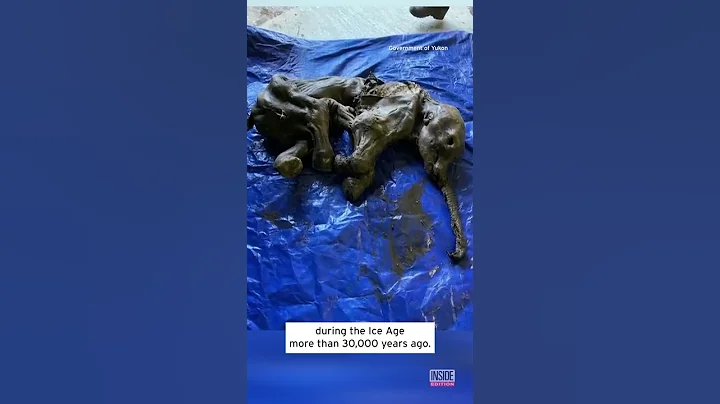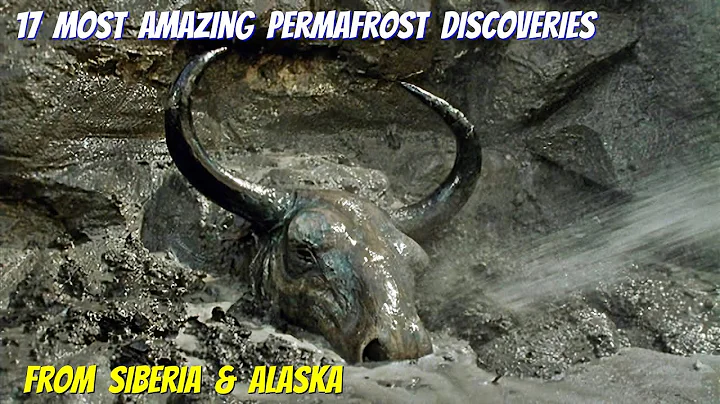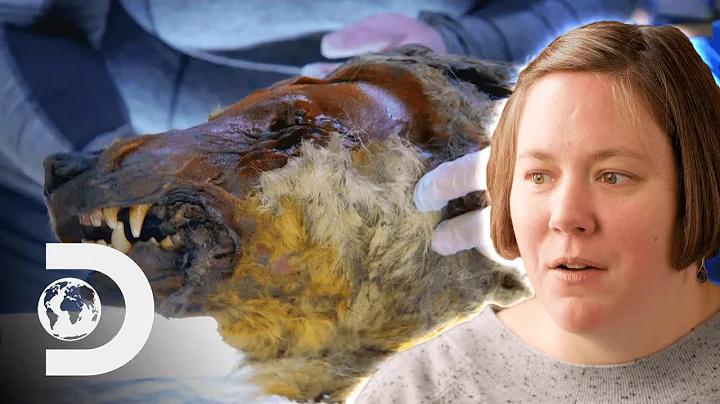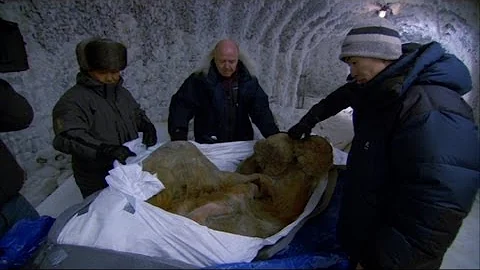An Ice Age paleontological creature aged  1305 appeared in Siberia . What worries scientists is that it should have been in the permafrost , but it appeared in broad daylight.
1305 appeared in Siberia . What worries scientists is that it should have been in the permafrost , but it appeared in broad daylight.
More and more ancient creatures are exposed in the Siberian wasteland, forcing people to think about whether their reappearance is a good thing or a bad thing?
Russian scientists say that global warming has caused Siberia's permafrost to thaw, exposing the remains of ancient creatures inside.
Their encounter with this era is not a good thing. On the contrary, it is likely to cause a huge disaster.

Ice and snow melt
Ancient Lemmings
A 14-year-old Siberian girl Angelina Sadovnikova found a shriveled animal carcass by a river. It looked like it had been frozen for a long time.
The girl handed the remains to the paleontologist Prokopi Nogovich.
Paleontologists used carbon 14 to date the biological remains, showing that the animal lived about 141,305 years ago, which happened to be the Quaternary Ice Age.
This remains is an ancient lemming, which has a certain genetic relationship with today's Siberian lemmings, but its size is obviously much larger than ordinary lemmings.

Existing lemmings
This ancient lemming is  66 centimeters long, which is as tall as an adult woman.
66 centimeters long, which is as tall as an adult woman.
Considering that the remains are dehydrated , it is very likely that its length was close to 2 meters during its lifetime. Wherever there is a mouse, there is a pig!
Why can a lemming grow so big? Paleontologists explained that animals generally respond to cold by increasing their body size, so that they can store more fat.

The skeletal structure of prehistoric lemmings
For example, polar bears, emperor penguins and other animals are the largest in the same family.
This lemming was no exception. The cold it faced was several times that of today's lemmings, so only making itself bigger could withstand the severe cold of the Ice Age.

Emperor penguins are the largest penguins in the world.
Today's natural enemies of Siberian lemmings are animals such as owls, Arctic fox, ferrets. During the Ice Age more than 40,000 years ago, this giant lemming The natural enemies are large animals such as saber-toothed tigers and dire wolves.
This well-preserved lemming remains is of great help to the study of organisms during the Quaternary Ice Age.
However, facing this priceless body , paleontologists could not be happy because the place where it appeared was really not good.

Arctic fox
The frozen soil is melting
The frozen soil is because the temperature is too low, which freezes the water in the soil, causing the entire soil to be frozen. The frozen soil is divided into seasonal frozen soil and permafrost .
The latitude of seasonally frozen soil is lower . They will melt in summer and turn into a tundra zone , which will freeze again in winter.
has a higher latitude of permafrost, and does not change into all year round. The place where the giant lemmings were found was supposed to be a piece of permafrost, but it melted in the summer.
Because the permafrost melted and caused soil loss , the remains of the giant lemming were exposed to the air and were discovered by the little girl.

The permafrost is thawing
And this giant lemming is not the first animal to be unsealed from the permafrost. Siberia has successively discovered mammoths from 30,000 years ago, and wolves from 30,000 years ago. woolly rhinoceros and so on 50,000 years ago.
These ancient creatures were frozen in the permafrost in ancient times. Siberia is like a natural refrigerator , freezing the remains of these ancient creatures.
And now, the refrigerator door opens to .What opened the refrigerator door was global warming.
The Quaternary glaciers started about  .5 million years ago and ended about
.5 million years ago and ended about  2,000 ago. According to the earth's temperature change cycle , we are still at the tail end of the Quaternary glaciers at this time. .
2,000 ago. According to the earth's temperature change cycle , we are still at the tail end of the Quaternary glaciers at this time. .

Cartoon Ice Age
Theoretically, the current temperature will not be so hot. However, from the 19th century to the present, the average temperature of the earth has increased by about 1℃. This rate is the fastest in the past 10 million years.
At this rate, the average expectation of the earth will be 5 to 8 degrees Celsius in the next 1000 years . By then, the earth will become the ice-free era again, and Antarctica will also become the forest land .
Global warming was originally a normal trend of the earth, but humans have helped the earth shorten the time it takes tens of thousands, or even hundreds of thousands of years to accomplish.

Global warming and human activities
Warm and cold changes
Since the birth of life, the earth has experienced  times of global cooling and
times of global cooling and  times of global warming . In addition, there have been countless little ice ages and small heat waves .
times of global warming . In addition, there have been countless little ice ages and small heat waves .
will cause the extinction of old species and the birth of new species every time. However, is hot and cold, coming and going . The earth is still the same earth, but every time the creatures have changed.
Global warming or cooling is essentially a change in the earth's atmosphere carbon dioxide .
Our current wave of warming is because humans burn fossil energy and release carbon dioxide .

Burning fossil energy
In fact, even if humans do not release it, the earth will release in its own way at some point.
Or human emissions of carbon dioxide are essentially a means for the earth to achieve self-temperature regulation.
Fossil energy is obtained from organisms from ancient times that underwent a series of changes after being buried in the earth's crust. They are carbon elements that have not entered the atmosphere.
When these ancient organisms were buried in the earth's crust, the earth was generally experiencing global cooling .
Most of the carbon of these ancient organisms came from the atmosphere of the previous era, so the changes in the earth's temperature and cooling are essentially the carbon cycle of the earth.

Coal in the strata
Humans have not changed the process of the earth , but have accelerated the speed . Therefore, what was originally Siberia's permafrost occurred and thawed .
But for humans, these thawings will bring a series of negative impacts to .
For example, these animals are modern humans have never encountered, and we don't know what germs they carry.
Russian scientists have discovered many ancient bacteria in the thawing permafrost of Siberia. Although they have not yet encountered any that will cause a catastrophe, if the melting continues, more and more germs will appear.
Some people will say that Siberia is sparsely populated, and as long as humans do not come into contact with these thawed ancient creatures, it should be difficult to be infected by ancient bacteria.
However, it is not easy for these ancient germs to get close to humans.

Various viruses
Frozen microorganisms
The melting of permafrost will produce water, and the water will seep out of the soil, carrying newly awakened germs, and they will follow the water from creeks to lakes and then back again The river finally reaches the sea .
It is difficult for us to count how many creatures they will encounter along the way, and how many of these creatures will eventually encounter humans.
In addition, the exposed remains of ancient organisms will also be encountered by Siberian wild animals.
The way animals explore is by smelling them. In the process, the germs will be transferred to the animals, making them intermediate hosts , and finally reach humans.

Siberian environment
Siberian summer is a place where many migratory birds lay eggs and raise their young. After they complete their breeding mission, they will leave again. Migratory birds are one of the biggest spreaders of germs, traveling across oceans to other continents.
Although these frozen ancient creatures provide scientists with a very good reference , they also bring unknown crises.
What's more, there are already humans involved in the business of searching for the remains of ancient creatures.
One of the most famous animals of the Quaternary Ice Age is the mammoth , a species that was even larger than the African elephant .

Mammoths of the Ice Age
The mammoth carcasses in the frozen soil are relatively well preserved, and the ivory tusks inside are also there.
There are some criminals who go to permafrost areas to search for the remains of mammoths in the melted soil, and then dig out their ivory tusks.
During this process, people came into contact with ancient remains. It is impossible for these treasure hunters to take complete protection. If they are infected by ancient microorganisms, the consequences will be devastating.

Mammoths found in permafrost
Sea level rise
The melting of permafrost is not the final form of global warming, because the final result is sea level rise and submerging the original land.
The area where giant lemmings were found in northern Siberia will also be flooded.
If all the world's glaciers melt, sea levels will rise 66 meters , and the entire land area will shrink by 10% to 20%.

Sea levels are rising
and the climate of most continents at that time will become extremely hot and dry. The most suitable place for living is Antarctica, which is frozen today.
Antarctica will usher in the long-lost green of . This is no surprise to the earth. After all, Antarctica was once connected to Africa.

Antarctica
Perhaps for humans, the earth at this time is already very uninhabitable.





















